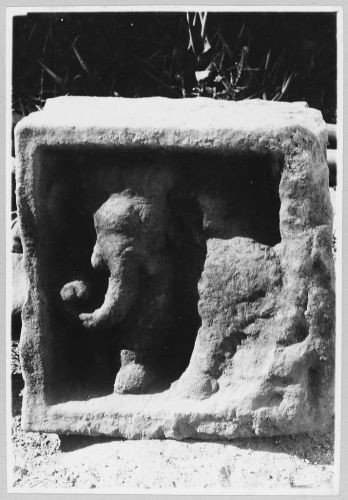
CLAEYS Jean-Yves (EN)
Biographical Article
As an alumnus of the École des arts décoratifs in Nice and the École des Beaux Arts in Paris, Jean-Yves Claeys went on to become an architect. In 1923, hewas a laureate at the Salon des artistes français. From February 1923 to May 1927, he was an architect in the public works department of Indochina, but, passionate about archeology, requested to join the French School of Asian Studies (l’École française d’Extrême-Orient, or EFEO). He was appointed temporary member in June 1927, then permanent member in 1930. From 1927 to 1928 he directed the first excavations of the Cam site of Tra Kiêu (Quang Nam) and unearthed the foundations of temples and a large number of sculptures. In 1934, he directed another construction site in Thap Mâm (Binh Dinh). He became curator of the monuments of Annam-Campa, a section of the archaeological service which he created and organised, spending long months in the field. At the same time, he worked on an ethnological and technological survey that was jointly commissioned by the Indochinese Trocadéro Museum, the musée d’Histoire naturellein Paris, and the EFEO. In 1934, he became the EFEO’s secretary-librarian. In 1937, he was appointed head of the EFEO’s archaeological department, a position he had already occupied on an interim basis in 1933. After the death of Charles Batteur (1880-1932), he assumed responsibility for the Tonkin Monuments Conservation. In 1943, lung problems forced him to halt his professional activities for a few months. He published a study on the archeology of Siam and an introduction to the study of Annam and Campa. In September 1946, suffering from tuberculosis, he was repatriated to France. His condition no longer allowed him to return to Indochina, so he remained on long-term leave until 1953 when he retired. He was then appointed director of studies of exceptional class (directeur d’études de classe exceptionnelle) at the EFEO.

The Collection
In 1928, Jean-Yves Claeys contributed to the creation of a collection consisting, as a whole, of 243 manuscripts and 86 microfilms. The manuscripts come in a variety of forms: either punch-engraved on palm leaves (usually three to six lines per sheet) which, stacked on top of each other, are held between two wooden boards (the whole being wrapped several times by a cord whose two ends are tied); or punched (usually in a single line) on a narrow, long palm leaf, which is then folded into a fan; or written down with local ink (prepared from resin and carbon black or calcined berries), on so-called Chinese paper, the sheets of which are grouped in notebooks and sewn on one side, or on local paper resembling cardboard, which is folded like a fan; or noted in pencil or school ink on commercially-purchased sheets of paper or notebooks. A certain number of manuscripts (aside from the manuscripts on ôles) have their first or last pages on their cover, or graffiti, letters of the alphabet or meaningless scribbles on their blank pages, which do not seem to be the work of copyists but of the caṃ who had leafed through them. The texts listed are either original manuscripts (few in number); handwritten copies, photos or microfilms of texts generally made in situ, which explains why they are not always of good quality. The manuscripts surveyed rarely contain a single text. In the majority of cases, they contain several texts or fragments, often without any connection between them. They are mainly short rituals or texts of divination,magic, astronomy, medicine, history, or fragments or summaries of various versions of tales, legends, historical legends or epics.
Related articles
Collection / collection d'une personne
Personne / personne












